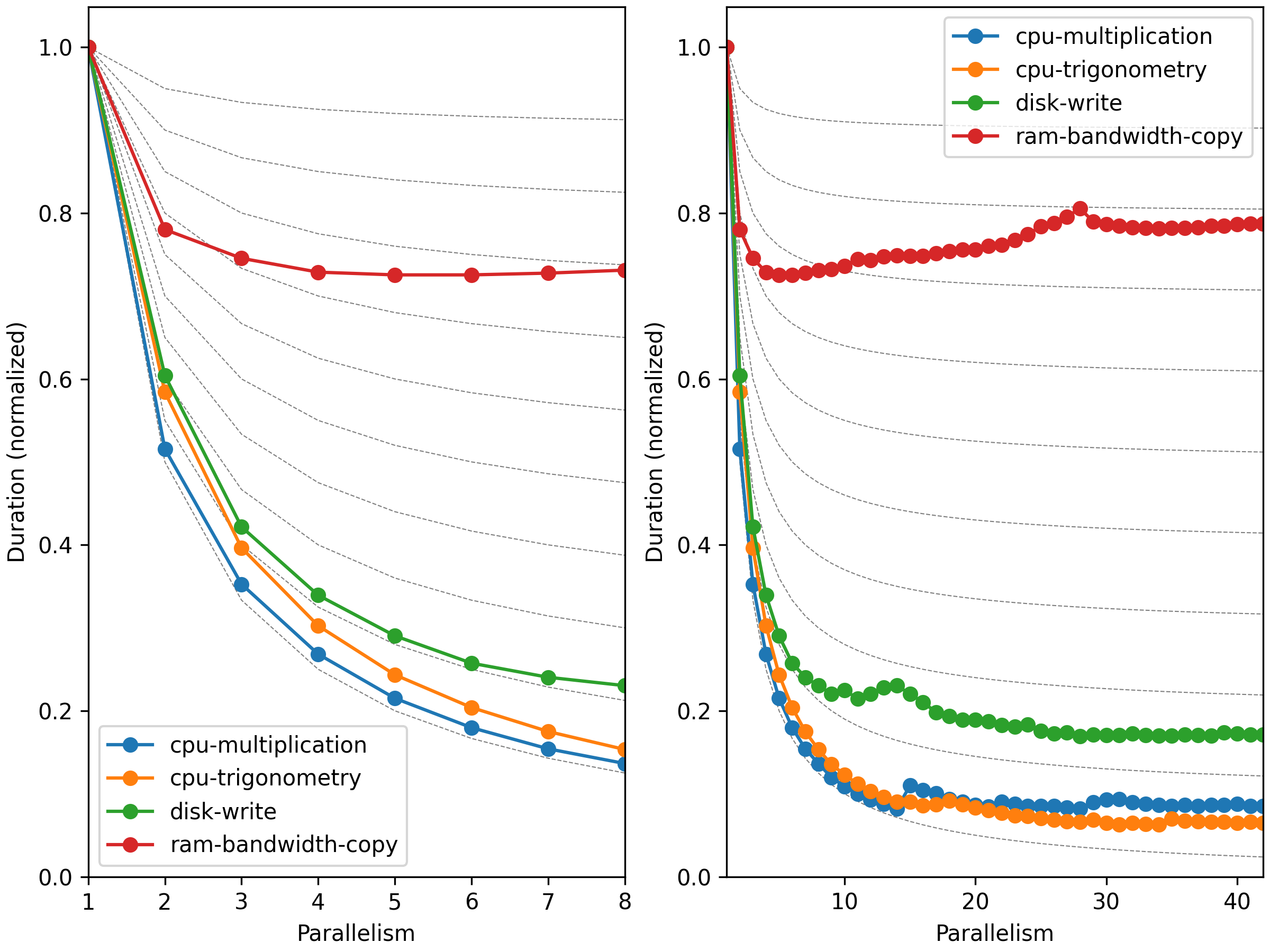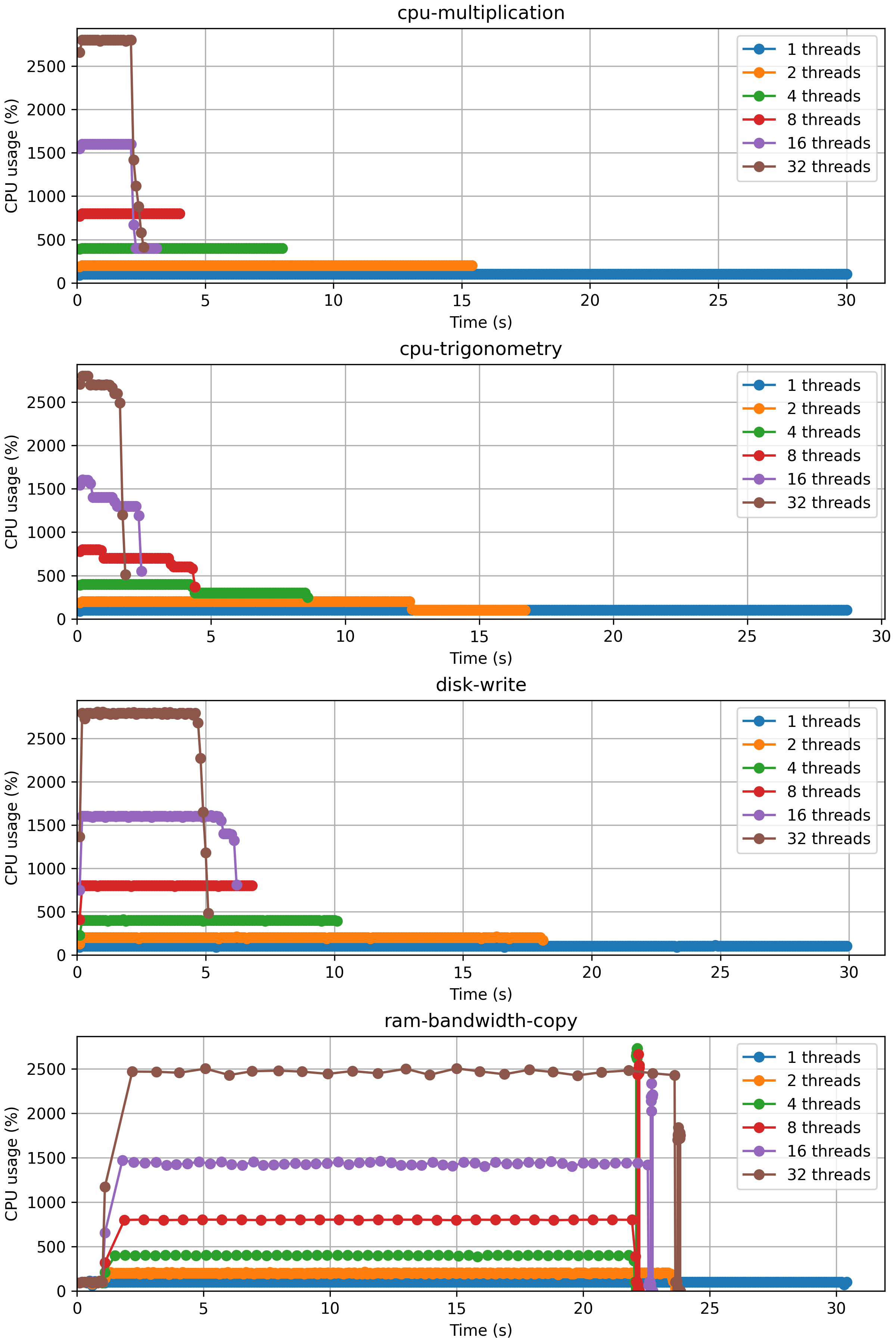bottlenecks is an attempt to demonstrate the different performance bottlenecks that can appear in computer programs.
It's currently limited to programs running only on a CPU. GPUs may be added later.
The simplest way to "use" this repository is to read the report generated on my machine, which I have annotated with a few observations and explanations.
Run ./make.sh then have a look at the report in build/report/report.md.
If you want to store the report somewhere else: ./make.sh report_directory=reports/**some_name**. (Do this if you want to add your machine's report to the repository; feel free to open a pull request. In that case, please include all files in that directory.)
For quicker iterative work on the scripts: rm -rf build; ./make.sh quick=1.
cpu-multiplicationdoes only floating-point multiplications, using very little memory (a few bytes per thread)cpu-trigonometrycomputes cosines and arc-cosines, also using very little memorydisk-writewrites 1000 large-ish files on the diskram-bandwidth-copycopies a large-ish memory array to another one
- Would using
select-based non-blocking I/O help saturate the disk's bandwidth with fewer threads indisk-write?
Just to make you want to read the full report :)
Probably the most intuitive metric, this graph shows the duration of each program according to the number of threads used to run it. Durations are normalized to the single-thread duration.
The thin dashed lines are representations of Amdahl's law for

